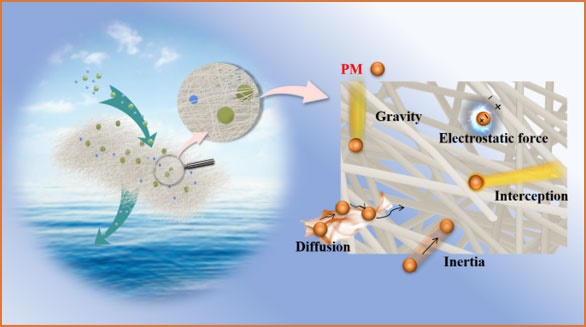Poor air quality is worldwide recognized as one of five health risks for causing adverse impacts on human health. Nanofibrous membrane is competitive to capture unclean nanoparticles since its lightweight, small diameter, high specific surface area, and easy to combine with functional additives. However, the trade-off between high filtration efficiency and low pressure drop posts challenge.
The removal mechanisms of fibrous filters to nanoparticles follow two main principles, that is mechanical adsorption and electrostatic adsorption. In this review, various nanofibrous membranes were listed according to the two principles to provide the train of thought of seeking optimal results between their filtration efficiency and pressure drop.
Besides, to articulate the filter classification in this review, compare summary table was listed into six parts, which were net/nanofiber, nonwoven substrate/nanofiber, nanofiber/microsphere, multilayer structure, electric filters, and conductive filters.

A schematic illustration of the filtration process and filtration mechanisms. Only a few particles were passed through the nanofibrous filter when the airflow carrying different sizes of particles across it. To concretely, the filtration process between filters and nanoparticles can be ascribed to diffusion, gravity, inertia, interception, and electrostatic force.
This work is supported by Nantong Science and Technology Project (No. JC2019009), Science and Technology Guiding Project of China National Textile and Apparel Council (No. 2019010); and Priority Academic Program Development of Jiangsu Higher Education Institutions (PAPD). The paper can be found in NANO journal.
Read the original article on World Scientific Publishing.
